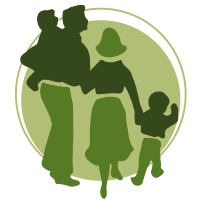Osteoarthritis is the most common type of arthritis in the UK.
The main symptoms of osteoarthritis are pain and stiffness in your joints, which can alter mobility in affected joints and make it difficult to do certain activities.
Symptoms:
Symptoms may not be present all the time and can come and go in episodes depending your activity levels and even the weather – many sufferers find pain worse in the cold and wet and experience relief in warm dry climates.
In more chronic cases, the symptoms can be continuous.
Other symptoms you may notice include:
- joint tenderness including redness and swelling
- increased pain and stiffness when you have not moved your joints for a while eg getting out of bed
- joints appearing slightly larger or more ‘knobbly’ than usual
- a grating or crackling sound or sensation in your joints
- limited range of movement in your joints making it difficult to carry out day to day activities
- weakness and muscle wasting (loss of muscle bulk and tone)
Any joint in the body can be affected by osteoarthritis but the most common areas affected are the knees, hips, and small joints in the hands.
Osteoarthritis of the knee
If you have osteoarthritis in your knees, it is likely both your knees will be affected over time, unless it has occurred as the result of an injury or another condition affecting only one knee.
Your knees may be most painful when you walk, particularly when using stairs or walking up and down hills.
Sometimes, your knees may ‘give way’ beneath you or make it difficult to straighten your legs.
You may also hear a soft, grating sound when you move the affected joint.
Osteoarthritis of the hip
Osteoarthritis in your hips often causes difficulty moving your hip joints. Activities such as getting in and out of the car or putting on socks and shoes may be come difficult as mobility in the joint is affected.
You will also usually have pain in the groin or outside the hip. This will often be worse when you move the hip joints, although some people continue to feel discomfort and pain whilst resting and even sleeping.
Chiropractic and Osteoarthritis
Several studies indicate that Chiropractic maninpulation can be a suitable and useful treatment for osteoarthritis. Chiropractic care does not reverse the physical aspects of osteoarthritis, but may support it.
Gentle manipulation and myo-fascial release can help to:
- Increase range of motion
- Restore normal movement of the spine
- Relax the muscles
- Improve joint coordination
- Reduce pain
A review of the scientific literature suggests that chiropractic, especially when combined with glucosamine supplements and stretches and exercise, helps treat OA.
Chiropractors will avoid using direct thrusts or pressure on red, swollen joints.
Luck’s Yard Chiro Moves app and DVD show you how to do stretching and relaxing exercises for and Tone has made lots of YouTube films demonstrating how to exercise and keep moving to improve mobility.
http://umm.edu/health/medical/altmed/condition/osteoarthritis



